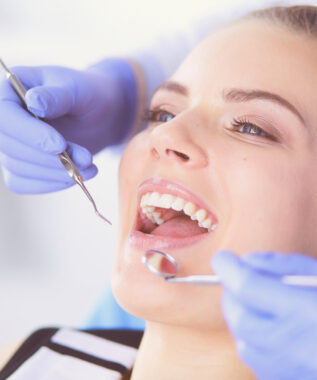 As a busy adult, oftentimes the last thing on your mind is the need to have a tooth removed. For most cases, there is a list of procedures or treatment options that can usually prevent the need to remove one of your natural structures. Other times, however, a tooth may be beyond saving if it is too late in the process, leaving the only viable option as extraction. In today’s blog, your Leawood, KS dentist looks at when it is appropriate to remove teeth and what impact it has on your oral health.
As a busy adult, oftentimes the last thing on your mind is the need to have a tooth removed. For most cases, there is a list of procedures or treatment options that can usually prevent the need to remove one of your natural structures. Other times, however, a tooth may be beyond saving if it is too late in the process, leaving the only viable option as extraction. In today’s blog, your Leawood, KS dentist looks at when it is appropriate to remove teeth and what impact it has on your oral health.
Protecting Other Structures
More often than not, a tooth is only considered for removal if it is beyond repair, usually due to infection or decay. In its early stages, decay can take the form of a simple cavity, or hole that harmful oral bacteria create by weakening your teeth’s structure. If this cavity is not treated with a restorative filling in a timely manner, it can continue to grow and decay, causing infection and ultimately even loss. What’s more, infection or decay can spread to surrounding structures, putting them in danger as well. When the decay becomes so significant that no other treatment will be able to contain it, that will be a time to consider removal.
Discomfort or Pain
In addition to the need to protect surrounding teeth, severely damaged teeth can cause a significant amount of discomfort or pain. For instance, weakened structures become more sensitive than healthy ones because the damage done affects not only the outside, but the sensitive dental pulp inside as well. This can hinder your bite’s ability to function properly, making routine activities such as biting, chewing, and speaking difficult to bear. Once again, if the damage is so significant that another procedure cannot assist, your last hope may be to have it extracted in order to restore your functionality.
Other Restorations Fail
Removing a tooth is nobody’s first choice, and your dentist will attempt to exhaust a list of other procedures first to try and salvage it as best as it can be. For instance, we mentioned that minor cavities caused by decay can often be cleaned and remedied with a dental filling. In more severe cases, your dentist may treat a diseased tooth with a dental crown, or even a root canal procedure if the damage is severe enough. The downside, however, is that any of these restorations can fail if damage has progressed enough, in which case the only option would be to remove the damaged oral structure.
Learn More
Ensuring your oral health is our priority at Dreem Dentistry. For more information or to schedule your appointment, contact our Leawood, KS office by calling 913-681-5500 today.






